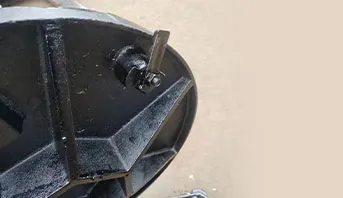types of carpentry nails
The Various Types of Carpentry Nails A Comprehensive Guide
Carpentry is an ancient craft that involves the construction and repair of wooden structures. One of the smallest yet most crucial elements in carpentry is the nail. Nails are used to fasten and support wood, ensuring robust and lasting constructions. Understanding the different types of carpentry nails is vital for any woodworking project, as each type serves a unique purpose and has specific characteristics that make it suitable for certain applications. This article explores the various types of carpentry nails and their uses.
1. Common Nails
Common nails are the most widely used nails in carpentry. Typically made from steel, these nails are strong and durable, making them ideal for framing, roofing, and general construction work. They usually have a flat head and a smooth shank, which allows for easy driving into wood. Common nails come in various lengths, enabling carpenters to select the appropriate size for their projects.
2. Finish Nails
Finish nails are smaller than common nails and have a smaller, slightly rounded head. This design allows for the nail to be driven into the wood with a nail gun, leaving a minimal mark that can be easily concealed by wood putty or paint. Finish nails are perfect for trim work, cabinetry, and other applications where a polished appearance is essential. They also help to eliminate splitting when working with thinner wood.
3. Brad Nails
Brad nails are even thinner than finish nails and have a very small head, making them almost invisible once installed. They are predominantly used for delicate work, such as attaching small trim pieces or molding. The lightweight nature of brad nails means they can be used without the risk of splitting the wood, making them ideal for fine woodworking and intricate applications.
4. Framing Nails
types of carpentry nails

Framing nails are specifically designed for structural applications. These nails are longer and thicker than common nails, providing superior strength for critical joints in framing. They are often used in conjunction with a nail gun, which facilitates rapid and efficient fastening. Framing nails are essential in constructing walls, roofs, and other supports that require significant strength.
5. Roofing Nails
As the name suggests, roofing nails are intended for roofing applications. They have a larger, flat head designed to hold shingles securely in place and help prevent water penetration. Roofing nails typically have a galvanized coating to resist rust and corrosion, which is essential for materials exposed to outdoor elements.
6. Decking Nails
Decking nails are specially designed for use in outdoor decking projects. They usually feature a thicker shank and a sharp tip, allowing them to penetrate harder wood materials used in decking. Many decking nails also come with corrosion-resistant coatings to ensure they withstand the elements over time.
7. Specialty Nails
Beyond the common variety, there are many specialty nails designed for specific tasks. For instance, spiral nails provide extra holding power, while clipped-head nails are used in framing applications due to their ability to hold larger quantities in each strip for nail guns.
Conclusion
Choosing the right type of nail for your carpentry project is crucial for ensuring structural integrity and achieving a polished look. From common nails for basic construction to specialty nails for unique applications, understanding the available options allows carpenters to select the most effective fastening solution tailored to their needs. Whether you're a seasoned professional or a DIY enthusiast, knowledge about carpentry nails will enhance the quality and durability of your wooden projects.
-
Innovations in Razor Barbed Wire Design TechnologyNewsAug.11,2025
-
Roofing Nail Compatibility with Different Metal Roof TypesNewsAug.11,2025
-
Welded Wire Mesh for Rockfall Protection BarriersNewsAug.11,2025
-
Galvanized Wire Corrosion Resistance TestingNewsAug.11,2025
-
3D Fence Solutions Preventing Bird CollisionsNewsAug.11,2025
-
Using Chain Link Fence for Urban Garden SupportNewsAug.11,2025




